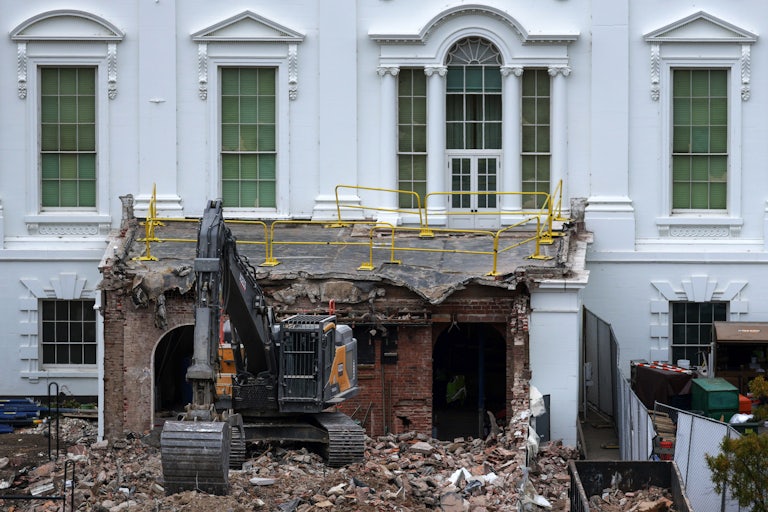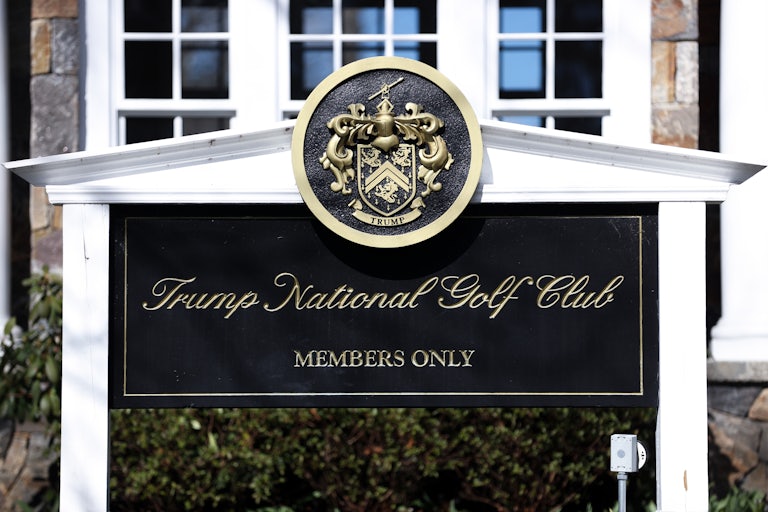Is Trump’s Ballroom About to Expose Everyone at the WH to Asbestos?
Trump’s White House destruction may have a major asbestos problem.

Red flags have been raised over asbestos and other potential health and safety risks during President Trump’s demolition of the White House’s East Wing.
“Federal law requires comprehensive asbestos inspection, notification, and abatement before any demolition,” the Asbestos Disease Awareness Organization wrote in a press release last week. “No publicly available information demonstrates that these statutory obligations have been fulfilled.”
Massachusetts Senator Ed Markey described similar concerns in a letter Thursday to the firm carrying out the demolition, ACECO of Maryland.
“The demolition of a structure of the age and historic national significance of the East Wing demands the highest possible standards of care, not the lowest bid and a blind eye toward regulation,” Markey wrote, according to ABC News and The Washington Post. “Construction workers on the East Wing site, nearby office workers and tourists, and passersby could now be at heightened risk of developing lung cancer, asbestosis, or mesothelioma from the inhalation of demolition dust.”
There is no safe level of asbestos exposure, and the fibers can stay in the air for days.
White House officials have neither confirmed nor denied the presence of asbestos—which is very common in older structures like the White House—but have said that a “very extensive abatement and remediation assessment was followed, complying with all applicable federal standards.” They also say that “any hazardous material abatement was done in September.”
But ADAO President Linda Reinstein says she’s seen zero public information that would confirm that. “I am deeply concerned for White House staff and others working in or near the East Wing demolition site,” she said. “It remains unclear what measures have been taken to ensure the safe removal of deadly asbestos and other hazardous materials.”
The White House last underwent major reconstruction in the 1940s and 1950s, when asbestos use was at its highest.








